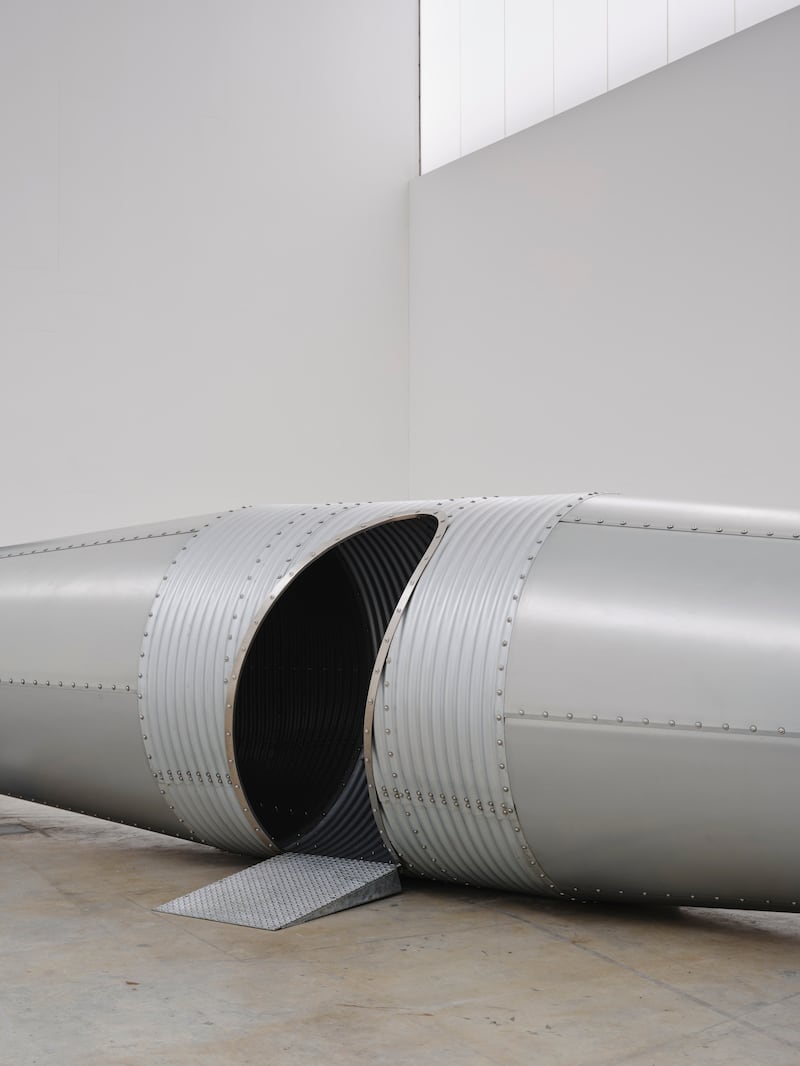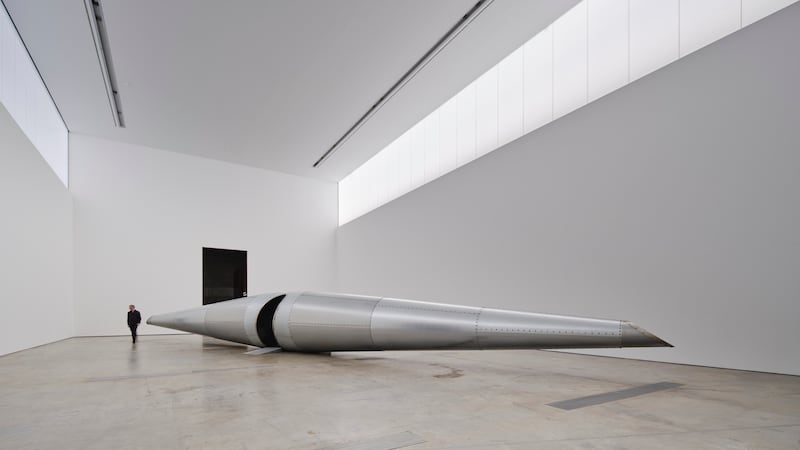Eilís O’Connell: In the Roundness of Being
Mona Hatoum: Eyes Skinned, and So Much I Want to Say
Visual, Carlow
★★★★☆
Spaceship, escape shuttle or torpedo? Visual’s main gallery has become home to an enormous, almost unearthly object. The Cork-based artist Eilís O’Connell is probably best known for large public sculptures at sites across Ireland and Britain. Her Apples & Atoms is a series of stainless steel balls, accompanied by apple trees, at Trinity College Dublin; Night Gates are a nice balance of delicacy and strength in an IPUT commission for 10 Molesworth Street in Dublin; while regular visitors to the Cork quays will recognise her elongated copper Reedpod for Howard Holdings at Lapps Square.
In the adjacent spaces at Visual, O’Connell shows a series of much smaller works in bronze, stone, fibreglass and other metals. Individually astonishing for the artist’s fluent skill with such a variety of media, collectively they demonstrate how much size changes the way we understand things. Her human-scale abstract works ask us to stand back, often even hold us off in an enigmatic fashion. The smaller sculptures instead invite a kind of emotional falling in, pulling you into intense contemplation, so that you can half-lose yourselves in their otherness.
Even when it is commissioned commemoratively, most abstract public art requires a level of withholding. Given that it will need to survive by general consent, part of the brief is not to do anything that’s going to overly offend anyone. If it happens to be beautiful, that’s a bonus. At Visual, O’Connell takes a step into work that evokes a more wrenching response. Her huge Capsule for Destinies Unknown: Series Two (2024) is a vast steel lozenge, tapering to a small viewing panel at each end, with a central hatch.

At once mysterious yet simultaneously unequivocal, it speaks of refuge and evacuation while recalling the engines of war that underpin such things. It is an echo of a piece the artist made for Ark, at Chester Cathedral, in 2017. Writing at the time, the artist described how “being safe today is almost a question of geography, politics, and the randomness of where you happened to be born, or where you happened to be at a certain time of day.” She went on to consider the migrant boats crossing the Libyan sea, and the “industry of war, corporate profitable production that leads to the destruction of our fellow human beings”.
READ MORE
That was in 2017, before the Russian invasion of Ukraine, and before the current war in Palestine. That the intensity of destruction has been unimaginably amplified now is underlined by the exhibition of two short films by the UK-based Palestinian artist Mona Hatoum in Visual’s upstairs gallery. So Much I Want to Say (1983) shows the face of a woman, her mouth covered in various ways by male hands. Heartbreakingly, Eyes Skinned (1988) plays footage documenting the 1982 massacre of Palestinians in Beirut refugee camps, projected on to hands that attempt to hide the eyes of a hooded figure. History repeats itself, as we continue to allow it by looking away.
Both exhibitions are at Visual, Carlow, until Sunday, May 12th

















